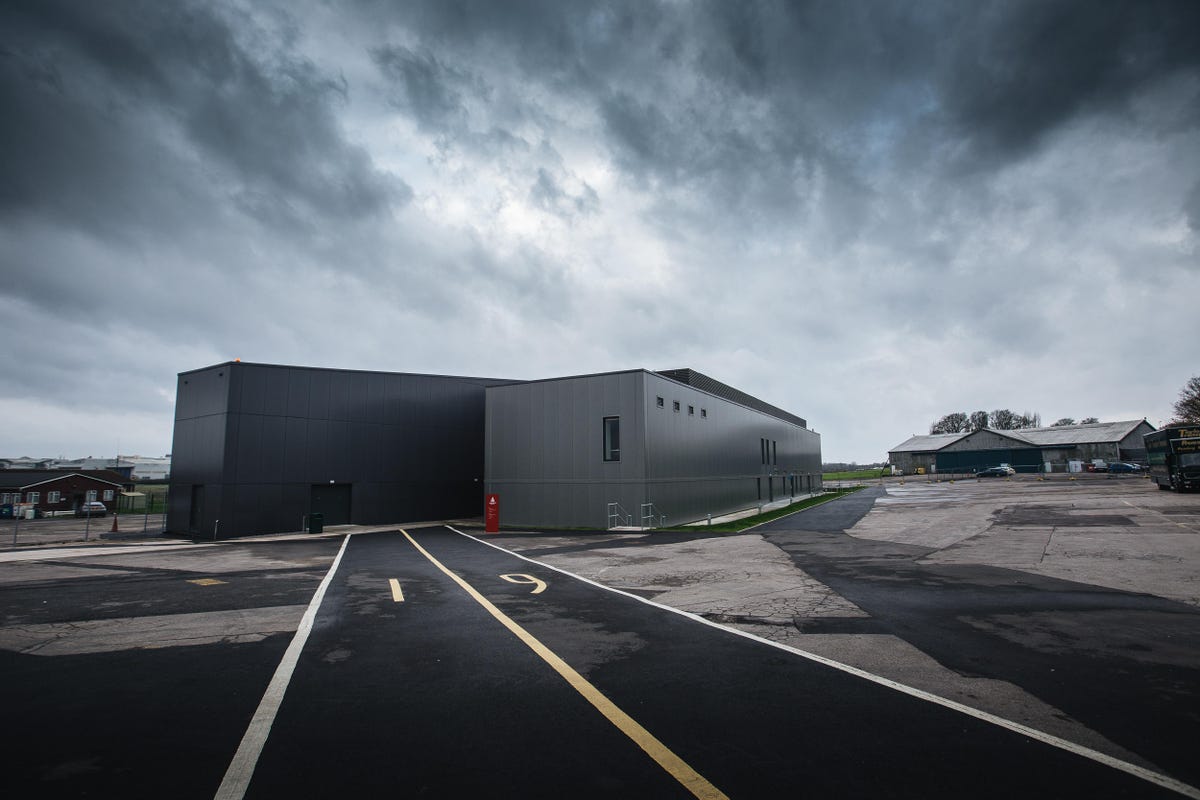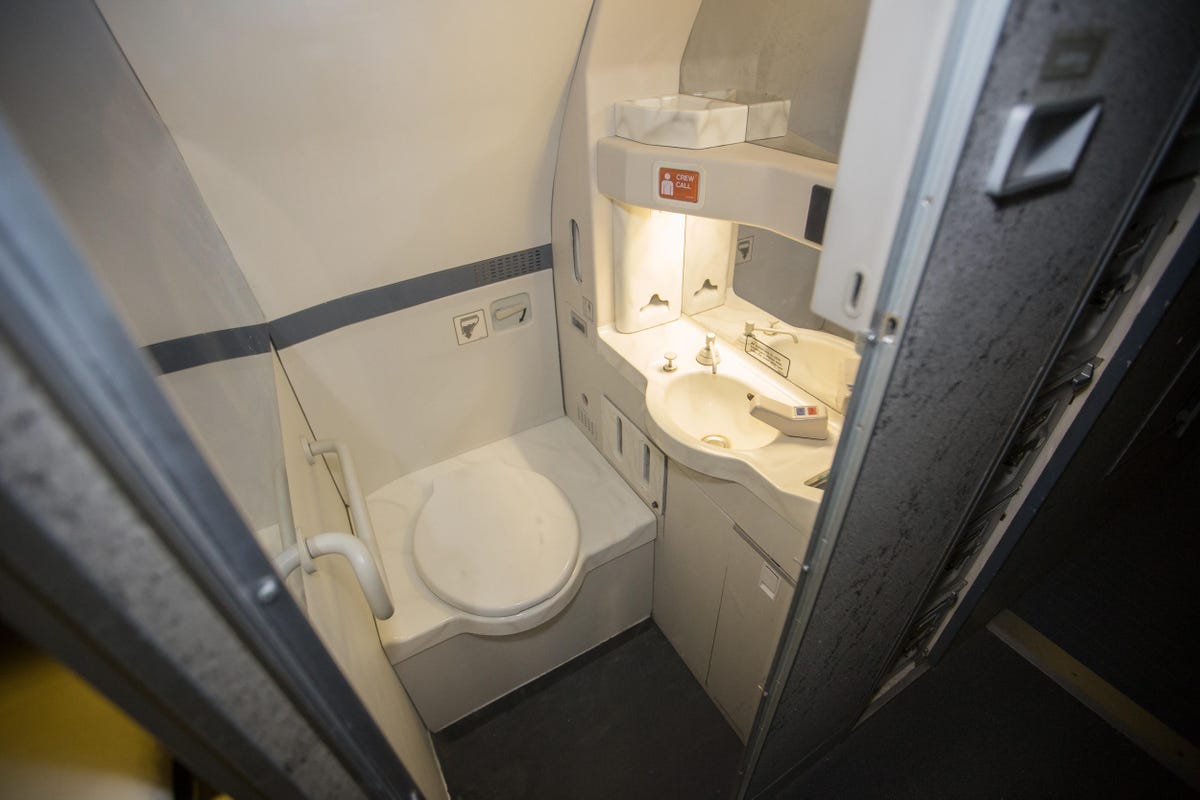A look inside the last Concorde
A former British Airways Concorde called Alpha Foxtrot was the last of the supersonic airliners to be built. Come inside its new museum home at its birthplace in Bristol, England.

Concorde Alpha Foxtrot's home is a purpose-built hangar next to the main building of Aerospace Bristol, an aviation museum that opened in October.
The former runway of Filton Airfield, which lies just beyond the hangar, was used to land some of the museum's aircraft even after Filton closed in 2012. Most of the buildings where the British Concordes were designed and built no longer exist.
Just as it should, Alpha Foxtrot (its name comes from the last two letters of its British registration) dominates the inside of the hangar. After the roof and three sides of the hangar were completed, the aircraft was towed inside and the final wall behind it was built. During that time, Alpha Foxtrot was protected by a sort of shrink-wrap that must have been absolutely amazing to remove.
Concorde's gorgeously sleek and streamlined profile -- or "high fineness ratio" if you want to use fancy terminology -- is apparent from any angle, but especially from straight on. The retractable visor that would protect the windscreen and cockpit form high heat during supersonic flight is down.
You're free to walk around the aircraft and even under the fuselage for one of the best views. The hatch in the fuselage at the top of the photo gave access to the baggage hold.
A viewing platform that runs around two sides of the hangar also gives you access to the airliner's interior via a bridge. A small exhibit of Concorde memorabilia is off to the right side.
The bridge into the cabin has a fantastic view of Concorde's pointy nose. The seam curving down from the windscreen marks where the droop nose would lower for landing and taxi, giving the pilots a better view in front of the of the aircraft.
Welcome onboard Concorde. You'll likely have to duck to get through this doorway.
Another view from the bridge shows the broad sweep of the delta wing. British Airways always opted for a minimalist paint scheme on its Concordes.
The cockpit has four seats: The captain, the copilot, flight engineer and a jump seat. The cockpit is so narrow that flight engineer's seat would block the door to the cabin when it was occupied.
The flight engineer's panel is a mind-numbing mass of controls and switches. It's a job you won't find on today's airliners.
Because the Concorde flew so fast -- Mach 2.02 or about 1,354 mph (2,179 kph) -- friction from the surrounding air would heat the fuselage causing it to expand by as much as 30 centimeters or almost a foot. During supersonic flight a large gap would between the instrument panel and the wall on the right behind the seat.
The main control panels were just as complicated. Here you can see the control columns for maneuvering the aircraft and the throttles that controlled the engines.
Concorde's cabin was just 8 feet, 7 inches wide and 6 feet, 5 inches high. My head scraped the ceiling when I stood up straight,
Forget the spacious lie-flat seats that are the standard in airline premium classes today. Concorde's seats were as narrow as today's economy class seats with marginally better legroom. But for a three and a half-hour transatlantic flight with fine dining and drink, no one really cared. The fabric and color of the seats changed a few times with the last design in an understated blue that was partly leather. (If you visit, be sure out check out the bright orange seat design from the 1970s in the exhibit.)
The windows were a bummer, being barely larger than a paperback book. But at Concorde's usual cruising altitude of 60,000 feet there wasn't much to see anyway.
You'd have to fight for space in those compact overhead bins.
The cabin crew would prepare gourmet meals and pour plenty of champagne in the tiny galleys like this one.

The lavatories were equally small. Mind your head when standing up.
You can't flip the switches on this control panel as much as might want to.
Concorde is equally impressive when viewed from behind.
Powering the Concorde were four Rolls-Royce/Snecma Olympus 593 engines, each of which produced 32,000 pounds of thrust. Like the aircraft itself, the engines were a joint Anglo-French venture. Though they were based on an existing powerplant, the Olympus 593 had to be designed to Concorde's specifications. It remains the only turbojet with an afterburner to power a civil aircraft.
The engines required long intakes with a complicated design that would slow down the air entering the engines during supersonic flight from about 1,350mph to 500mph. That step was necessary for the engine compressors to perform at top speed.
Every few minutes a video is broadcast along the side of the engines nacelles to show how they operated. As Concorde accelerated to Mach 2, hinged flaps at the top of the intake would move to control airflow into the engine.
The nozzles on Concorde's engines would partially close during landing to produce reverse thrust that would help slow the aircraft.
Concorde's main landing gear has four tires on each side. It was a tire like these that were partially blamed for the only Concorde accident when Air France Flight 4590 crashed just after takeoff from Paris on July 25, 2000.
The official investigation determined that one of the tires exploded after the Concorde ran over a scrap of metal on the runway during its takeoff roll (the strip had fallen off another aircraft that had just departed). A piece of rubber from the tire explosion then ruptured a fuel tank causing a fire and engine failure as the aircraft lifted off. Unable to recover from the resulting stall, Flight 4590 crashed into a hotel killing 109 passengers and crew and four people on the ground.
The twin nose gear is set far back from the nose. It would retract forward into the fuselage during flight.
Because Concordes rotated off the runway at such steep angles, a pair of small wheels called a tail bumper would lower during takeoff to prevent a tail strike.

